Great white shark chomps on whale carcass off Sarasota coast after swimming up to boaters’ with its jaws wide open
Sarasota boaters were surprised when a great white shark swam toward them and flashed its pearly white teeth before settling on a whale carcass a few feet away.
Video taken by Brian Jung and Daniel Delatorre on March 17 shows the shark sliding toward a boat 15 miles offshore in 50 feet of water.
The animal’s jaws hang open, revealing rows of pointed teeth, as the guests on board the boat exclaim. Upon closer inspection, the shark’s body is marred with scars.
“It’s going to eat our engine,” a woman notes as the animal pushes the boat.
He then swims to a bloated whale carcass floating in the water and begins taking huge bites before giving up the chase and swimming to another boat.
A man filming the encounter on his smartphone puts his hand in the water and tries to stroke the animal’s head.
Boaters off the coast of Sarasota were surprised when a great white shark swam toward them with a big smile
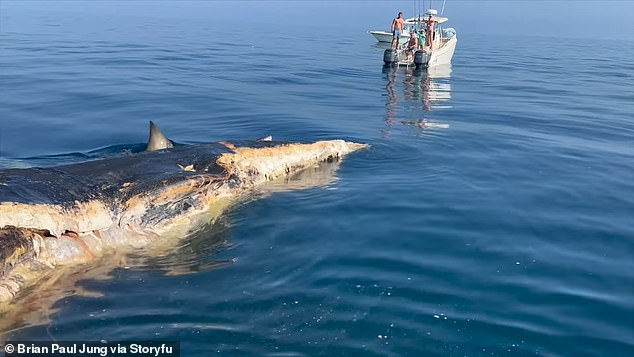
The shark was most interested in a whale carcass floating on the water
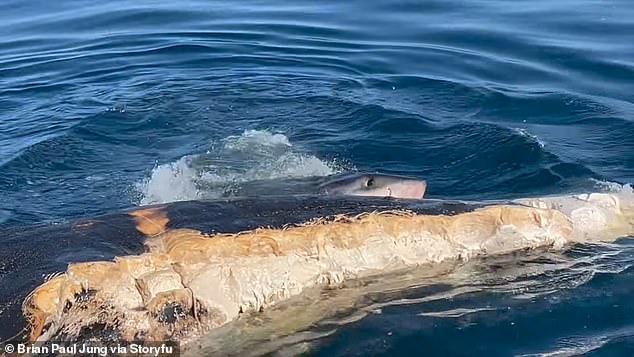
After eating the blubber, the shark moved to another boat
Jung told WFLA that a total of three sharks, which were not captured on video, were feeding on the carcass.
The dead sperm whale was dragged out to sea after it became stranded near Venice on March 10.
Officials determined it was an adult male, 43 feet tall and weighing approximately 35 tons, or 70,000 pounds.
As his breathing became labored over the course of the day, officials said they did not expect the whale to survive. He died around 3 a.m. on March 11.
“Clearly this whale was not feeling well or doing well being so close to shore and in this condition,” said Laura Engleby, chief of NOAA Fisheries’ Marine Mammal Division, Southeast Region. WFLA.
The whale was emaciated and covered in wounds from suspected attacks by other male sperm whales.
Shortly after his death, Florida Fish and Wildlife Conservation Commission investigators cut into the carcass to collect samples for autopsy, drawing a crowd.
The blood stained the water in the Gulf of Mexico, prompting officials to impose a ban on swimming due to “possible increased predation activity” in areas south of Venice Beach. The advisory was lifted on March 13.
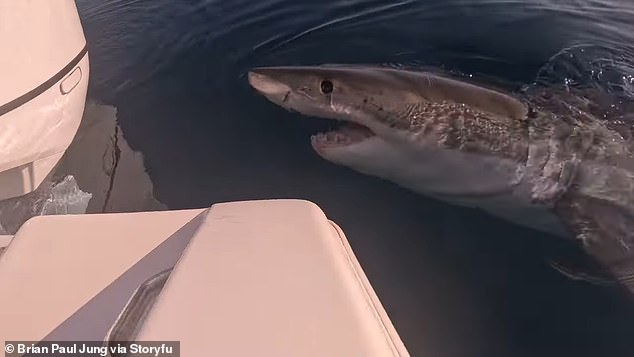
Great whites are about 4 feet long at birth and can grow up to 20 feet long
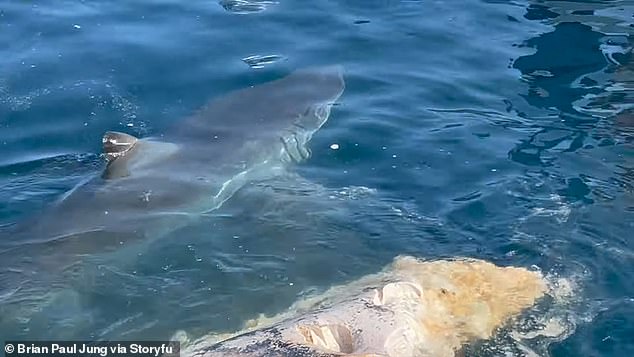
According to the cameraman, a total of three sharks, not all of which are visible on video, were feasting on the carcass

A great white sighting is not uncommon off the coast of Florida as their range extends from Maine to the Gulf of Mexico and the US Caribbean.
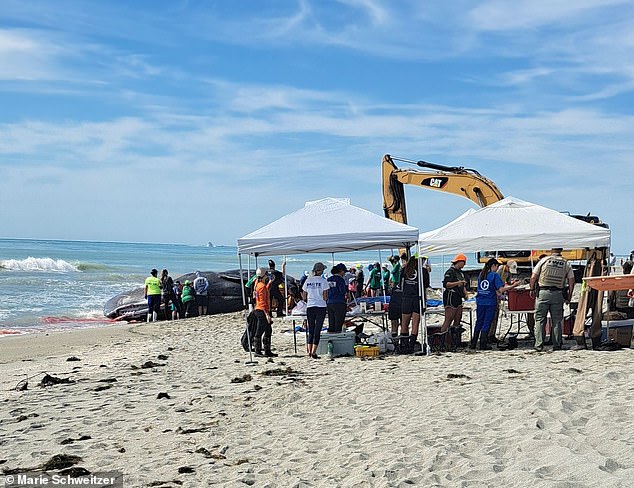
The sperm whale stranded near Venice on March 10. It was emaciated and covered in marks from apparent attacks by other whales
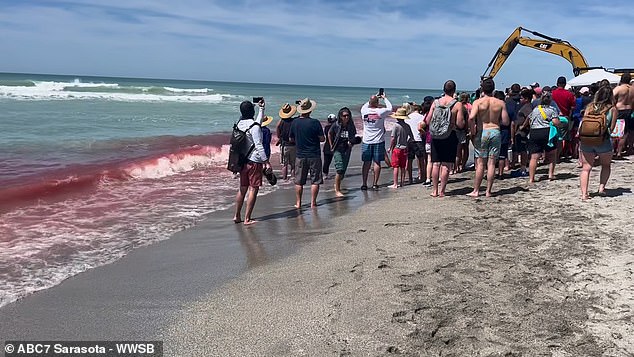
As conservationists cut into the carcass to prepare samples for necropsy, blood filled the water, leading to a no-swimming advisory.
It is extremely rare to spot a sperm whale in the southeastern United States. According to Engleby, researchers see about two per year.
The last sighting on the Gulf Coast was in 2008. In 2022, a starving 45-foot male became stranded in the Keys.
The whale had eaten garbage that prevented it from eating its usual diet of squid, sharks and fish.
The species is the largest toothed whale in the world. They often enter deep water and can dive to depths of more than 3,000 meters.
Females can reach 12 meters in length and weigh 15 tons, while males can reach 12 meters and 45 tons.
Despite their enormous size and significant lack of predators, they face a different threat than humans.
Their population is growing after being heavily hunted in the 19th century for a waxy substance in an organ in their heads called spermaceti. The substance was traditionally used in lamp oils, candles and lubricants.
According to NOAA, sperm whales continue to face risks such as ship strikes, entanglement in fishing lines, ocean noise, marine debris and the effects of climate change.
Great whites are about four feet long at birth and can grow up to 20 feet long.
It is not unusual to spot one off the coast of Florida. The top predators range from Maine to the Gulf of Mexico and the American Caribbean in the Atlantic Ocean.
